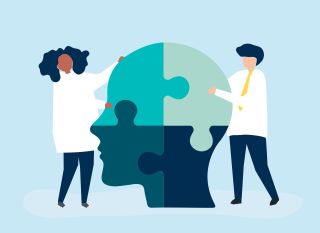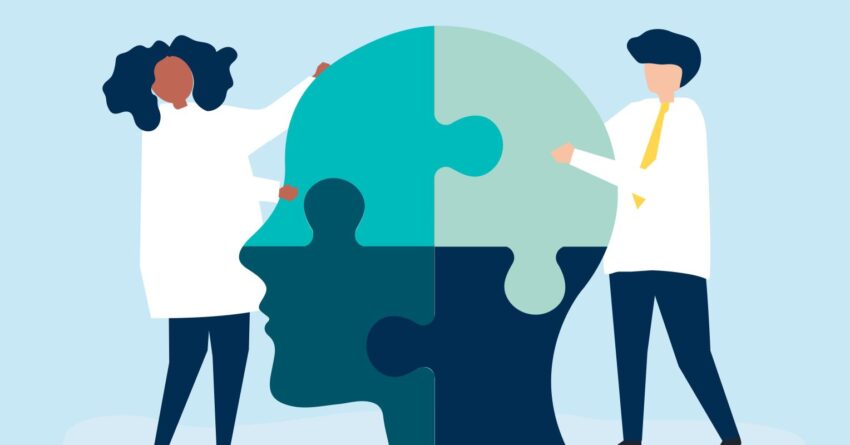
Rawpixel / Shutterstock
The World Health Organization recently released its 2023 diagnostic and treatment guide to mental, neurological, and substance use disorders.
Last updated in 2016, adopted in more than 100 countries worldwide, and translated into more than 20 languages, the 150-page document provides more guidance than earlier editions, with a new section on anxiety disorders and summarized evidence of what are currently most effective and least costly treatments.
The WHO considers mental, neurological, and substance use disorders “major contributors to morbidity and premature mortality in all regions of the world.” Yet treatment is poorly matched, with insufficient resources causing significant treatment gaps. In 2019, the latest edition found that mental, neurological, and substance use disorders were responsible for 10.1 percent of the global burden of disease as measured in disability-adjusted life-years and 25.1 percent of all years lived with disability.
Even more than their 2015 and 2016 counterparts, 2023 topic expert groups stressed the need to balance potential benefits against known and unknown harms, especially when there is low certainty of evidence. Also, driving their recommendations were factors such as cost-effectiveness, equity of approach, and overall feasibility in terms of costs and available resources, human and financial.
The expert groups mostly drew on quantitative evidence from Cochrane Reviews and, when not available, from other systematic reviews.
First-Line Treatments
Among this year’s stand-outs, though consistent with 2015 and 2016 guidance: Healthcare providers should consider antidepressants alone for adults with depression only when psychological interventions are not available.
Also continuous with earlier years: Drug treatments are not recommended in children and adolescents with anxiety disorders. An equally strong recommendation is made against antidepressants for children 12 years or younger.
The expert group on child and adolescent mental disorders gives clear reasons for preferring first-line psychosocial treatments over pharmaceutical ones. It also urges greater caution from doctors and healthcare providers in prescribing psychiatric drugs for anxiety and depression in children and adults:
- There is very low certainty of evidence supporting the benefits of SSRIs, as a group, in improving anxiety symptoms and there is moderate-quality evidence supporting treatment response to group SSRIs.
- Group SSRIs and benzodiazepines had significantly more discontinuations due to adverse effects than pill placebo.
- There is a lack of reliable data on suicidality for many pharmacological treatments for emotional disorders in children, and care providers should closely monitor suicide risk when children and adolescents take any antidepressant medicines.
- Diagnosis of anxiety in children can be influenced by the cultural context and requires a comprehensive assessment of determinants at a family level and in the environment to reduce risks of over-medicalization.
The WHO’s guidance on mental health improves on earlier years in detailing how long drug treatments should last and how patients safely can stop. For example, “Antidepressants are typically most effective in the initial 6 to 12 months and should only be continued where there is need and clinical oversight.”
With adults and benzodiazepines, by contrast, prescribing should be limited to “emergency management of acute and severe anxiety symptoms, and only as a short-term (3 to 7 days maximum) measure.” After that, benzodiazepines should be “discontinued gradually as soon as symptoms improve to avoid tolerance.”
With a focus on heightened risks and side effects, including when associated with pregnancy and older age, prescribers are urged to be clear with patients about their rationale for prescribing. The WHO recommends written and verbal information on known benefits, harms, and side effects (examples: sexual dysfunction, sleep problems, and weight gain), as well as drug interactions, and the likely time needed for signs of improvement.
Equally important, prescribers should routinely review the effectiveness of the medicine and any side effects during the first three months and, after that, at least every three months.
Those experiencing side effects will need guidance in reducing dosage safely and gradually, so as not to cause withdrawal symptoms, and to find alternative interventions.
A Renewed Emphasis on Psychosocial Treatments
Consistent with the WHO’s concerns about the cost, efficacy, side effects, and overprescribing of benzodiazepines and antidepressants, the updated mental health guidance recommends, as first-line treatment for moderate-to-severe depression and anxiety, “structured psychological interventions.” These include brief psychodynamic therapy, cognitive behavioral therapy, interpersonal therapy, and problem-solving therapy.
Although the World Health Organization’s approach to diagnosis and treatment differs markedly from the American Psychiatric Association’s Diagnostic and Statistical Manual of Mental Disorders, which tends to decontextualize disorders and conditions, the WHO’s Mental Health Action Programme guidelines are also consistent for children and adolescents diagnosed with ADHD, where “social skills training interventions” continue as recommended first-line treatment, with an emphasis on problem-solving, control of emotions, and verbal and non-verbal communication.
Diverse Expertise, Declared Conflicts of Interests
In establishing up-to-date guidance on diagnostic and treatment protocols used extensively around the world, the ten topic expert groups comprised 51 external experts. These, in turn, wrote their updated reports for a steering group of 33 individuals with expertise in research, clinical practice, health policy and programs, and guideline development methods.
All participating were required to declare in writing any conflicts-of-interest, whether financial or academic and professional.
Adopted in 2016 in more than 100 countries, the updated guidelines are likely to have significant implications worldwide concerning recommended first-line treatments for mental health diagnoses and advised length of prescribing when first-line treatments are not available.
